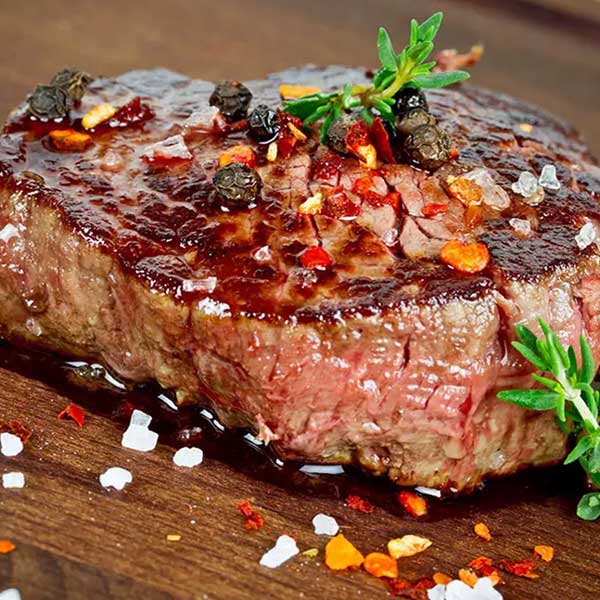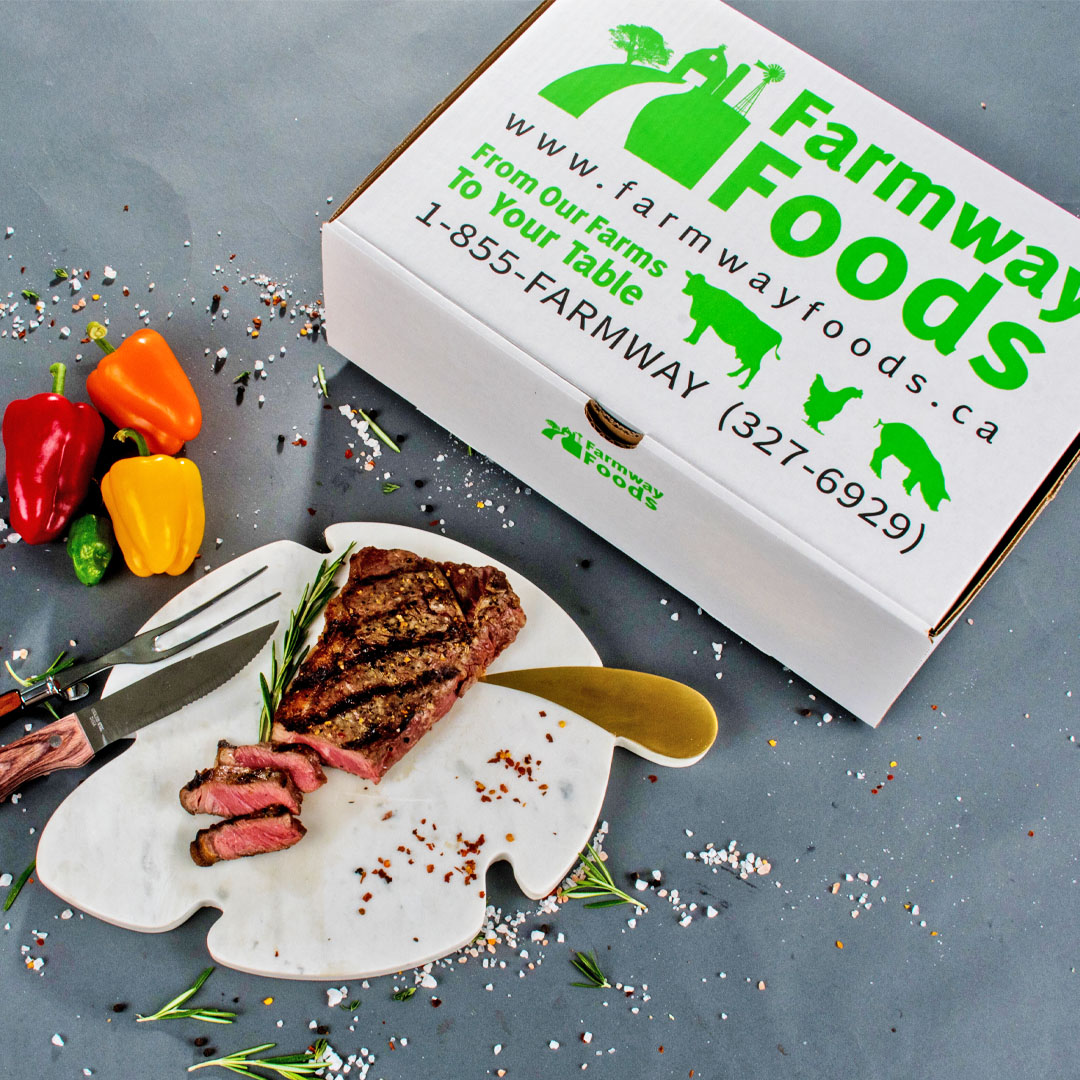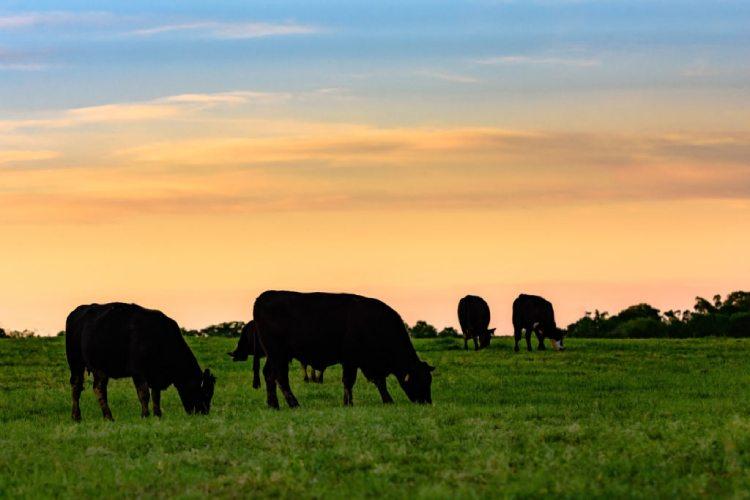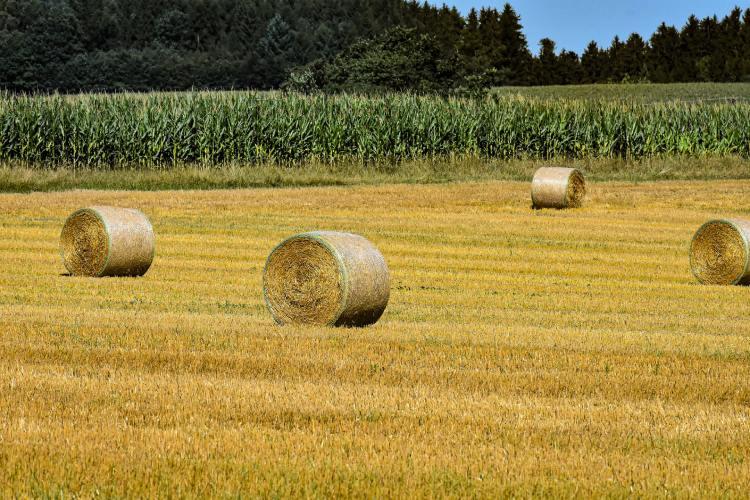If you’ve been researching the best type of meat to feed your family, you’ve probably heard about grass-fed beef. Maybe you also want to make more conscious choices, like avoiding factory farming and supporting local farmers. But with the wealth of information available on the internet, you might feel a bit confused about what all these terms mean when choosing healthy foods that your family will love.
To help you out, we put together a short guide that explains the different types of beef on the market and some benefits you should consider.
There Are 3 Different Types of Beef on the Market:
Grass-fed beef: Grass-fed beef are naturally raised on Ontario farms. This means they’re able to roam the farm’s pastures and graze freely. During the colder winter months, they’re fed hay (which is simply dried grasses). Unlike factory farming practices, grass-fed and pasture-raised cows aren’t confined to small spaces or feedlot pens.
Grass-fed beef finished on grains will freely graze the pastures for 2 years, and their diet is supplemented with grains for the last 100 days to ensure the meat has a tender texture, ideal amount of marbling, and delicious taste. Grass-fed and grain-finished beef is considered more desirable, pasture-raising the cows ensures they’re healthier and happier, and finishing them on grains gives the meat has a superior texture and flavour.
Grass-fed/finished beef: Grass-fed/finished beef are also allowed to roam the pastures and graze. However, they’re fed grasses their whole lives. This gives their meat a low fat content, but the meat suffers from a tougher texture and a “gamey” taste that isn’t considered desirable for cooking.
Grain-fed beef: Grain-fed beef are often the result of mass-production or factory farming. The cows will drink their mother’s milk and eat grass for 7 to 9 months, then they’re moved to feedlots and are exclusively fed grains, corn, and/or soy. The feedlots typically contain small stalls and the cows are confined for several months before being brought to the slaughterhouse. The cows may also be given hormones to maximize their growth. The meat will have a higher fat content due to the cows’ grain-based diet and lack of exercise.
So Why Should You Eat Grass-Fed Beef?
Beef is jam-packed with high-quality protein that your body needs to thrive. It’s also a rich source of B12, B3, and B6 vitamins, iron, zinc, and selenium. Beef also contains lesser-known nutrients that boost brain and muscle health, such as creatine and carnosine.
How grass-fed beef benefits your health:
While all beef can be considered healthy and nutritious, grass-fed beef boasts a richer nutrient profile than its grain-fed counterpart. Grass-fed beef is higher in:
- Conjugated linoleic acid (CLA) – a healthy Omega 6 fatty acid
- Omega-3 fatty acids – vital for brain health
- Vitamin A – important for bone, teeth, and eye health
- Vitamin E – protects cells from damage from free-radicals
- Antioxidants – boosts the immune system and prevent cell damage
How grass-fed beef benefits the cows:
Grass-fed beef isn’t just better for you – it’s better for the cows. Many conscious consumers nowadays want to know where their food comes from and that the animals are treated humanely. When you choose grass-fed beef, you can feel good about the cows benefiting from:
- Improved quality of life
- Better mental and physical health
- More space to exercise and socialize
- Natural diet for optimal health
- No factory farming and less stress
Get Healthier, Naturally-Raised Grass-Fed Beef from Local Ontario Farms
If you’re looking for pasture-raised and grass-fed beef from local Ontario farms, chances are you won’t find it at your local grocery store. If you want the highest quality grass-fed beef in Ontario, you can find it at Farmway Foods. We exclusively source our beef from local Ontario farms that practice ethical farming and raise their animals with the utmost care. The cows are free of added hormones and antibiotics, and are finished on barley and grains to ensure a delicious taste your family will love. The result? You can serve your family the healthiest, tastiest meats available and feel good about what you eat. Contact us to learn about our Ontario grass-fed beef today and taste the Farmway difference for yourself!
Watch Our Video: Ontario Grass-Fed Beef Makes a Delicious Meal!









